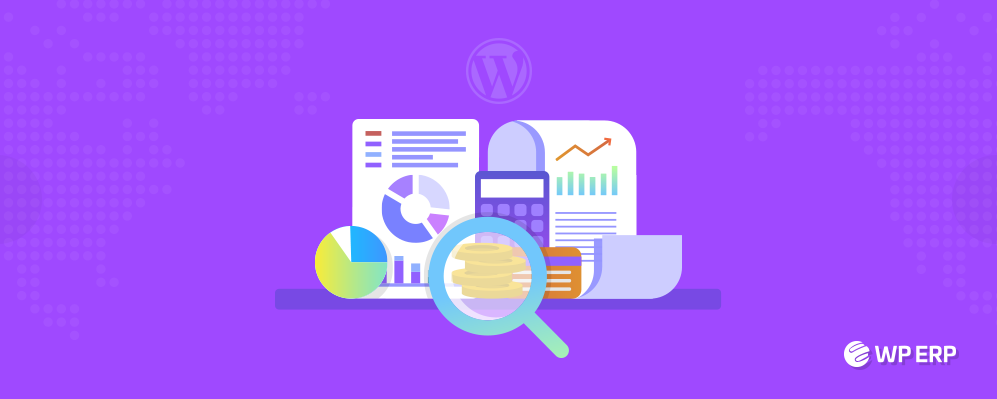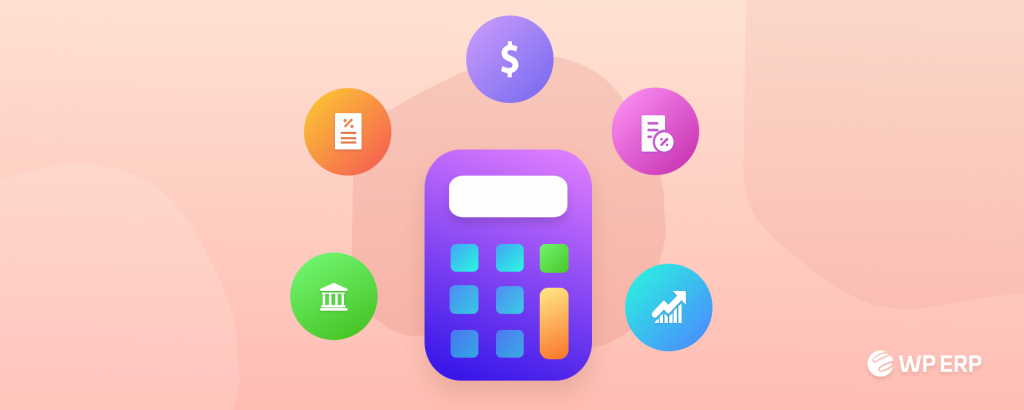Managerial accounting refers to the techniques for evaluating the viability and ability to grow or scale-up a business. As a responsible person, you can utilize managerial accounting formulas for collecting, analyzing, and processing all the related data to help company management make better business decisions.
In the first part of “The Ultimate Guide to Managerial Accounting“- we have described all the basic functionalities, objectives, and techniques. Today we’ll show you how to generate reports on the operational results of a business using basic accounting equations, so that the top management can effectively plan, control, organize and direct all the activities of the business to successfully reach the goal.
So let’s begin with-
How Do Managerial Accounting Formulas Work?

Managerial accountants are responsible for providing essential information relating to the business. This information generally comes in numeric form, calculated using certain managerial accounting formulas. Here we have compiled some of those formulae used by managerial accountants to prepare reports for the admins.
How to Calculate Job Order Costing
Job order costing is the process of tracking the costs of manufacturing each product. This costing method is actually used when the manufacturer produces a number of different products which are different from each other. So you need to calculate the cost for doing a single task. Job costing may include direct labor, materials, and manufacturing overhead for that specific job.
To calculate job order costing, accountants maintain a job cost sheet that has individual sections for above raw materials, labor, and manufacturing overhead as we have already mentioned.
Written as an equation, job costing is calculated like this:
Total Job Cost = Direct Materials + Direct Labor + Applied Overhead
For example, a company asks a manufacturer to produce a piece of equipment like a Leather Stitching Machine. So the job costing sheet may look like the following one:
Job Order Costing
| Job Item | Hours | Rate | Cost |
| Direct Materials | – | – | $1500.00 |
| Direct Labor | 50 | $10.00 | $500.00 |
| Applied Overhead | 50 | $5.00 | $250.00 |
| Total Cost of the Product | – | – | $2250.00 |
How to Calculate Process Costing

Process Costing is one type of cost accounting that is largely used by the company to produce mass homogenous products. It allows manufacturing companies to evaluate how many products they are producing and how much it costs to produce it.
For example, a manufacturing company makes cakes. In order to determine the process costing the business first should identify the units involved during the manufacturing process. The department flow will look like below:
Raw Materials → Preparation → Baking → Packaging → Finish Goods
Here, each department generates cost to continue the procedure further. We demonstrate the costing worksheet below:
Requisition of Raw Materials
| Process | Cost |
| WIP-Preparation | $100,000.00 |
| WIP-Baking | $3,000.00 |
| WIP-Packaging | $12,000.00 |
| Raw Materials Total | $115,000.00 |
Direct Labor
| Process | Cost |
| WIP-Preparation | $3,000.00 |
| WIP-Baking | $5,000.00 |
| WIP-Packaging | $6,000.00 |
| Total Labor Cost | $14,000.00 |
Manufacturing Overhead
| Process | Cost |
| WIP-Preparation | $800.00 |
| WIP-Baking | $500.00 |
| WIP-Packaging | $1200.00 |
| Overhead Total | $2,500.00 |
So, we got the idea about the cost flow through the system but what about the cost in between these departments. Identify what would the journal entries look like and observe the crediting and debiting factors when the product moves from one department to another (i.e., from Preparation to Baking to Packaging and finally, to Finished Goods).
Let’s assume we have $47000 worth of whip that we’ve done in the prep department and we want to transfer it to the next department of baking.
Department WIP Account-
| Process | Debit | Credit |
| WIP-Preparation | – | $47,000.00 |
| WIP-Baking | $47,000.00 | – |
| Total | $47,000.00 | $47,000.00 |
| Process | Debit | Credit |
| WIP-Baking | – | $47,000.00 |
| WIP-Packaging | $47,000.00 | – |
| Total | $47,000.00 | $47,000.00 |
| Process | Debit | Credit |
| WIP-Packaging | – | $47,000.00 |
| Finished Goods | $47,000.00 | – |
| Total | $47,000.00 | $47,000.00 |
Absorption Costing vs. Variable Costing
Absorption costing deals all of the direct costs associated with manufacturing a product, whereas Variable costing only includes the variable costs directly incurred in production but excludes some direct fixed costs.
Here are the formulas for each:
AC= Direct Material Per Unit + Direct Labor Per Unit+ Variable Overhead Per Unit + Fixed Overhead Per Unit / Total Units Produced in Period
VC= Direct Material Cost + Direct Labor Cost+ Variable Manufacturing Overhead / Total Units Produced in Period
It shows the AC formula includes all the essential elements so the higher authority can get a better idea about their inventory. And determine the price for the goods and services in a more realistic way.
Understanding Cost Behavior & Cost-Volume-Profit (CVP) Relationship

Cost behavior defines how the cost of a product will change if there comes any change in some particular activities. These costs include variable costs, step variable costs, curvilinear costs, fixed costs, and mixed or semi-variable costs. Cost-volume-profit (CVP) analysis is also known as a break-even analysis.
This costing method is usually used to identify how changes in costs and volume affect your firm’s operating income and net income. With this calculation, the sales price, fixed costs, and variable cost per unit remain constant.
The formula for performing this analysis is given below:
CVP = Fixed Cost (FC) / Contribution Margin (CM)
Here, Contribution Margin= Sales – Variable Costs
For example, a company with $100,000 of fixed costs and a contribution margin of 40% must earn revenue of $250,000 to break even.
CVP= $100,000 / 0.40= $250,000
Managerial accountants should evaluate this formula to generate suitable results. That indicates how many units they need to sell to break even (cover all costs) or reach a certain profit margin. CVP analysis is only reliable if your company fixes the cost within a specified production level.
How to Prepare an Operational Budget
The operating budget is a projection of all the expenses and to be incurred & incomes to be generated inside a business for a particular period of time. Operating expenses consider the expenses on raw material purchases, processing costs, employee salary, interest on a loan, office maintenance, administrative expense, etc. Whereas operating income refers to the revenue from business activities and income from selling products.

Follow these steps to generate an operational budget:
- Identify the annual expenses
- Calculate the number of units produced and sold for the year (if different)
- Divide expenses by production, figure out the cost per unit value
- Determine revenue based on the units sold, and calculate the gross income per unit.
- Subtract the cost per unit from the revenue per unit. Buy this calculation you will get the profit margin by unit. It helps the authority to make some strong decisions regarding business welfare.
A declining profit margin would indicate either your expenses should be reduced or the revenue must be increased to cover up the shortfall. Whereas a positive profit margin boosts up the confidence showing future advancement.
Standard Costing and Variance Analysis
Variance can be calculated by determining the difference between standard cost and actual cost of the final output. A variance can be favorable or unfavorable. Favorable variance is encountered when the actual cost is less than the standard cost. But if the actual cost is more than the standard cost, the variance will be unfavorable. Accountants can identify the variances and pass the report to the higher authority. So that they can use this cost details to reduce unnecessary business costs.

For example, if the standard labor cost of a biscuit company is $3.00 to produce one unit of chocolate cookie, and the actual cost to produce the same unit of product for that company is $2.95 there would be a $0.05 favorable variance:
Labor Cost Variance
| Standard Labor Costs | $3.00 |
| Actual Labor Costs Per Unit | $2.95 |
| Variance | $0.05 |
If the actual labor cost comes more than the cost assumed before, then management likely needs to evaluate its budgeting process.
How to Use Activity-Based Costing (ABC)
Activity-based costing (ABC) is an accounting method used to find the total cost of activities necessary to make a product. Managerial accountants use this methodology to assign overhead and indirect costs such as salaries and utilities to related products and services.
For example, a manufacturing company makes 2 products A and B. Product A uses 3 times the power of Product B per month. Now if you get the power bill of $200, it would be logical to figure out whether the price of each product is justifiable based on this difference in power use.
| Products | Units Sold | KW per Unit Used for Period | Cost for Each Product per Unit |
| Product A | 100 | 3 | $1.50 |
| Product B | 100 | 1 | $0.50 |
| Total Products Sold | 200 | 4 | $1.50 |
Here we have shown only one factor to set the price of a product, but an accountant can employ the same method for other costs as well.
This costing approach is mostly used in manufacturing company help them to set a more realistic pricing strategy. As it makes the cost data more reliable, also eliminates the possible errors during the calculation. Additionally, it allows businesses to classify their operational costs that incur during the production process.
Capital Budgeting

Capital budgeting is the planning process that a company uses to determine which long term investment proposal should be taken care of and which one should be declined. If you are up to start a new project or plan for a big investment then capital budgeting can be a reliable tool to measure the actual potentiality.
As a part of capital budgeting, an organization might analyze a project’s lifetime cash inflows and outflows. That ensures whether the potential output of the project will meet the target milestone. This process is also known as investment appraisal.
Ratio Analysis
Ratio analysis is a great tool to figure out the financial weakness and soundness of a company. It shows the comparison of the line item data from a company’s financial statements. This managerial accounting formula is used to reveal insights regarding operational efficiency, liquidity, activity, debt, and solvency. So that people can identify how an organization is performing over time while comparing a company to another from a similar industry.

Although this gets a bigger picture of the company’s financial status, these useful insights should be paired with other metrics as well. Investors and analysts investigate the company’s both past and present financial statements through ratio analysis to improvise its future performance. For that, they need to apply various ratio analyses and compare them to previous years. Let’s see the formula for current ratio analysis to quantify a company’s liquidity.
Current Ratio Analysis= (Current Assets) / (Current Liabilities)
Let’s assume there’s a company current assets of $800 and current liabilities of $400. With these figures you can easily count the current ratio as follows:
Total Current Assets= $800
Current Liabilities= $400
Current Ratio Analysis = $800 / $400 = 2
Essential Managerial Accounting Formulas
Here are some more important formulas to managerial accounting:
Accounting equation
Assets= Liabilities + Shareholder’s Equity
Contribution Margin
Total Contribution Margin= Total Sales – Total Variable Cost
Contribution Margin Per Unit= Sales Price – Variable Cost Per Unit
Contribution Margin Ratio= Total Contribution Margin / Total Sales
Net Income
Net income= Revenue – Expense
Cost of Goods Sold = Cost of Production + Opening Stock of Finished Goods – Closing Stock of Finished Goods
Cost Volume Profit Analysis
Total Cost = (Variable Cost Per Unit X Volume) + Fixed Costs
Net Income= (Sales Price X Volume) – Total Cost
Conclusion
With these managerial accounting formulas, accountants can easily prepare their reports for admins. Therefore the top management can realize the impact of their decision and set a better strategy for their business advancement.
However, in this modern era, you can introduce a reliable accounting software to your business to form a smarter business operating system. It will assist you in creating your balance sheet, trial balance, income statement & so forth without knowing debits & credits. Having an error-free organized report will also improve decision-making processes by driving your decisions to come faster & easier.
Do you still have any question related to managerial accounting? Feel free to share them with us in the comments below.



